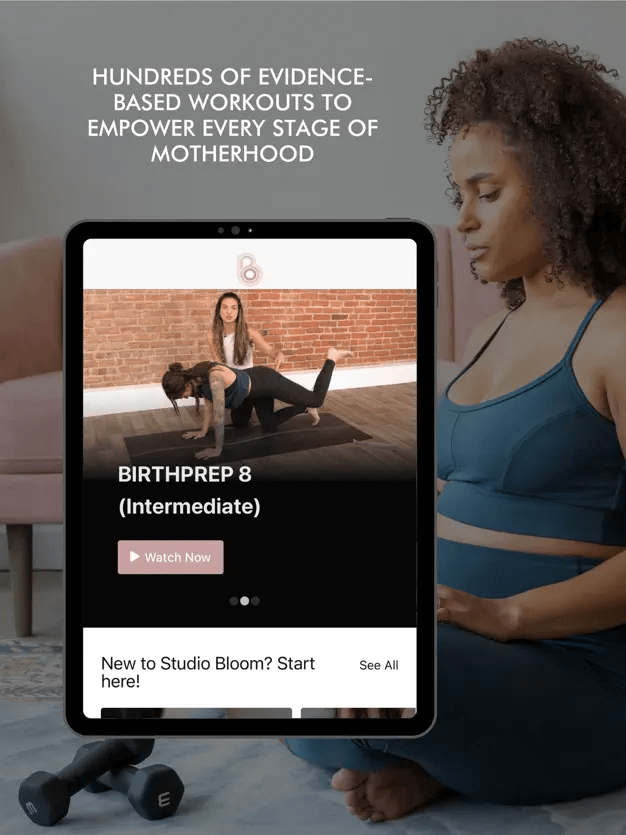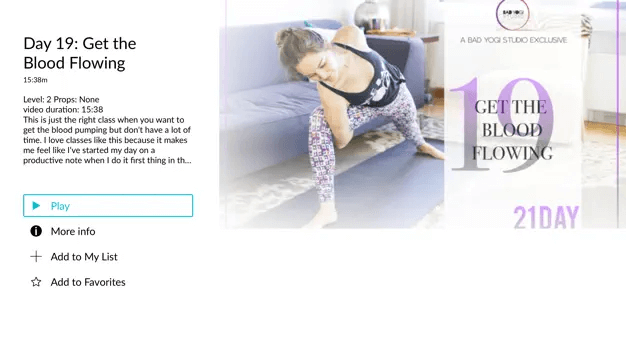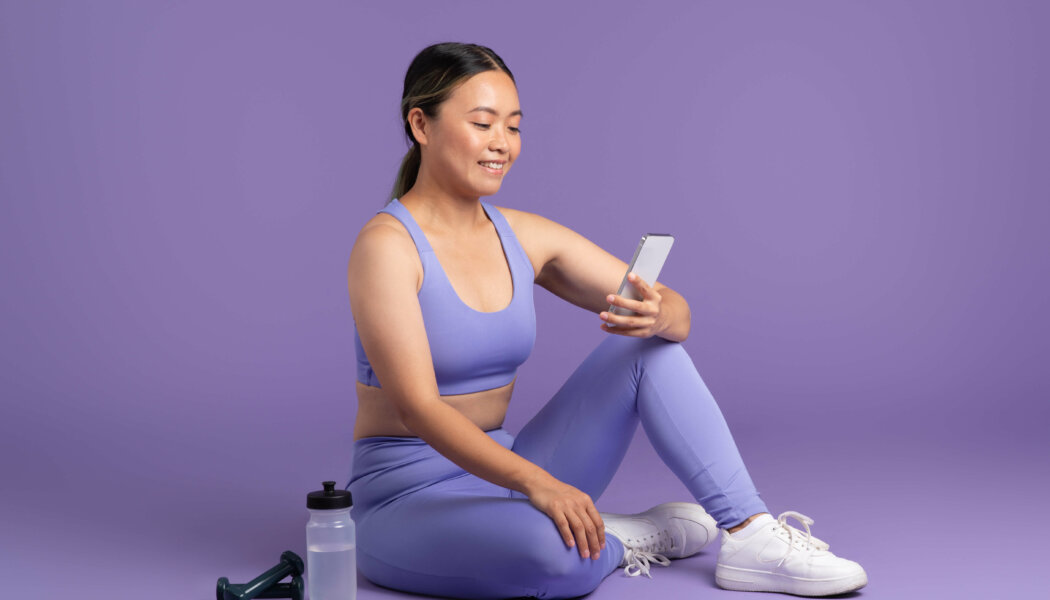You’re about to learn all you need to know to create a fitness app that will help you generate more revenue for your buddying fitness business. When you’re done, you’ll be able to apply your new knowledge to create an app and share it with the world.
And before you think that it’s impossible to learn how to create an app without any developer or coding knowledge and experience, or that you need to be a marketing genius or prodigy fitness app creator — you don’t.
A lot has changed about the way mobile fitness apps are created today. Fitness app development isn’t nearly as challenging as you think it may be.
You don’t need to know anything about:
- Progressive web application development
- Where or how to build a fitness database of content
- What tech stack you’ll need to power your fitness application
- How to design and create fitness app features
- Which programming language you must know to succeed at fitness app development
- How to code native apps
- Which platform hardware to invest in
- How to manage social media integration
- What third-party device connectivity is needed to create your fitness app
You can lean on companies like Uscreen to create stunning fitness apps for you, instead of writing code or searching for developers.
This guide walks through how to create your own fitness app step by step, from understanding the digital fitness market to ideation and publishing your app.
Build, launch and manage your membership, all in one place.
Understanding the fitness app market
The digital fitness industry has fundamentally changed how health and wellness creators interact with their audience. Accelerated by the COVID-19 pandemic, people worldwide were forced to find alternative ways to maintain their fitness programs outside of a studio or gym.
Years later, and we’ve seen that the trend isn’t fleeting.
Our data shows that Uscreen customers with their own membership apps have more 8x more paying members, and generate 10x more subscription revenue, than those without apps.
They also have double the watch-time on their exclusive membership content. And the reason is simple: people want a sleek experience built specifically for the devices where they love to consume their content. From their mobile phones, to tablets, to smart TVs…
Workout apps are no exception. The fitness apps market space is filled with mobile applications that help people track physical activity, maintain healthy lifestyles, and achieve their goals received 21 million downloads in January 2023 alone (the highest surge on record).
Here are 3 consumer trends driving the digital fitness industry, proving that workout apps are in demand:
- The quest for convenience. Today’s fitness-goers seek effective, easy-to-integrate workouts into their lifestyles. Readily accessible fitness and nutrition apps give them more control over routines. Statista found that customers look for convenience and personalization when trying out ways to stay fit.
- Personalization. Sports medicine studies show personalized, evidence-informed training plans are more effective than generalized programs. A workout app designed to offer tailored exercise plans for specific audiences can help deliver better results, faster.
- Community engagement. Humans are social creatures. With digital fitness apps, they can connect with like-minded people and feel part of a group. This improves engagement and loyalty to the workout app provider.
The digital fitness revolution is here to stay, with technology bridging the gap between traditional fitness routines and modern lifestyles. Knowing the market dynamics is essential for creating your fitness app if you want in.
Types of Fitness Apps
Fitness apps fall into different categories, often all under the umbrella of wellness apps. While this guide covers how to create your own mobile app, designed to monetize videos and other content professionally, it offer a little more. It’s also designed to give you a complete understanding of what the fitness app world looks like. The fitness app market can be segmented into activity, diet and nutrition, and workout apps.
Activity or Fitness-Tracking Apps
Ideal for tracking output, activity apps monitor workouts. Users can track calories burned, steps taken, distances covered during cardio workouts, and speed. Advanced activity trackers are able to monitor heart rates, plot performance over time to show trends, and have geolocation functionality for detailed performance reporting.
Diet & Nutrition Apps
Nutrition and diet apps provide nutritional information on food users consume. Most apps track the caloric value of specific ingredients, complete meals, and provide eating plans with shopping lists for convenience. These kinds of fitness apps come with advanced features like barcode scanning to help users quickly determine the nutritional value of ingredients when shopping, goal tracking, and integrations with fitness trackers.
Workout Apps
Workout fitness apps provide step-by-step instructions on how to perform specific exercises. These are perfect online fitness business accompaniments because they can include users’ fitness journeys, offer complete training programs, including a workout menu, and more, to help your customers reach their fitness goals.
For example, when you start working on your custom fitness app with Uscreen, you’ll learn that you can monetize your workout app in different ways. And it’s perfect for anyone from personal trainers to an up-and-coming fitness influencer because our white-label fitness app is so versatile. It allows you to offer workout video tutorials as a subscription service, and you can also sell content like eating plans, downloadable trackers, and more.
The Benefits of Gamification
Gamification is a major component of app development, and for fitness applications, it’s especially important. Integrating gamefication during app creation helps users develop stronger levels of commitment.
It’s common to find that mobile apps in each category have designed user journeys to foster positive psychological commitments to their health and wellness goals. Research shows that gamification may enhance the efficacy of therapeutic-based apps, reduce depressive symptoms, and activate reward-mediated neural pathways.
💡FUN FACT: We’ve built a gamification feature into our fitness apps that can be linked to an Apple Watch. It’s a feature all Uscreen fitness app owners can offer their clients. Users can track how many workouts they have completed, helping them develop consistency and more commitment to improving their health. More on this later.

How to create a fitness app in 9 steps
1. Conduct market research
Before you dive into your app idea, take the time to perform market research. Managing the creation of a fitness app involves a multi-phased approach. Start by deciding who your app will be designed for. This will determine your app’s features, tone, and promotion strategies.
Do you have an existing following? Chances are, you’re not starting from scratch. Tap into your YouTube channel and other social media channels to gather the following information about your audience:
- Age, gender, location, preferred workout style.
- Average income, how much they’ll pay for an app.
- What they like and dislike about other fitness apps or programs.
💡PRO TIP: Survey, interview, and study potential members to figure out user needs, preferences, and problems with current fitness apps. You can get qualitative data from this and find out what’s going on in the market.
Once you have a better idea of who will use your app, you’ll know how to reach them with your app.
Studio Bloom, for example, has a specific target audience, which is pre and postnatal fitness-goers. The brand has been training women through pregnancy and postpartum for over 12 years with fitness classes, guided programs, and cross-platform personal trainer/coaching support.
Studio Bloom’s app hosts a variety of classes from core, cardio, HIIT, cycle, and its signature BirthPrep class for pregnant women. It’s perfect for Studio Bloom’s audience. Members can stream workout tutorials on their iPads, iPhones, and smart TVs.

It also includes a Fitness Tracker for Apple Watch so members can:
- Monitor stats during workouts.
- Track calories burned, heart rate, and active energy.
- Sync all data to Apple’s Fitness app.
This workout app is perfect for women dedicated to maintaining and enhancing their wellness before, during, and after pregnancy. It caters specifically to their unique physical needs and fitness goals during these critical phases and provides a sense of community along the way.
2. Research your competition
Standing out with your own workout app is the goal. To reach it, you want to understand what your competitors are already offering.
Identify the top-performing apps in your niche.Analyze their top functionality, user experience, pricing, and app store reviews. What features do users love? What are their pain points?
Say you’re comparing 2 competitors: HomeFit and WorkoutPlus.
- HomeFit: Offers a variety of workout plans, like bodyweight workouts, equipment tutorials, and mindfulness sessions. It integrates with wearable technology like smartwatches to track performance. HomeFit has a freemium version with in-app purchases and a premium version at $20 per month.
- WorkoutPlus: Focuses on high-intensity interval training (HIIT). It’s a paid app that provides real-time feedback through machine learning, has social features for community challenges, and its API can sync data from MyFitnessPal, FitBit, and Nike Run Club. WorkoutPlus is $70 per month with a 14-day free trial.
You learn that, with HomeFit, users love the variety of workout types. However, they find the options overwhelming and the frequent upsells annoying.
WorkoutPlus users love the personalized workout routines and community aspects. But, they find the price is too high and have privacy concerns surrounding AI.
Some conclusions you can make:
- People appreciate workout variety.
- They desire a clean, simple interface.
- Community features are strong engagement drivers.
- Quick and accessible workouts are preferred.
- Technical performance is crucial.
Perfect, now what does this mean for your fitness app? There are some must-have elements to plan for:
- User-friendly design that offers a range of workouts without overwhelming choices.
- Integrated community and gamification features.
- Quick, high-quality workout options must be available.
- Have a monetization strategy that isn’t intrusive, like a membership.
- Ensure your app has near 100% uptime and that bugs are fixed immediately.
- Provide a clear channel for feedback and support inquiries.
Your research aims to identify underserved areas in your market and then add features or services to address them.
3. Define clear goals
Define the scope of the project clearly. What specific problems will your app solve? What features will your app have? How does it align with business objectives?
Decide on the type of fitness app you want to create. There are many options:
- Healthcare app
- Workout plan app
- Meal plan app
- Weight loss app
- Pilates/Barre app
- Wellness app
- Strength training app
- Yoga app
For example, your health app can provide highly personalized workout plans and offer virtual coaching sessions. Maybe you want to create educational content around mindfulness and yoga that people can stream to their smart TV, like Bad Yogi Studio.

4. List out your must-have fitness app features
Speaking of features, they are the core of your app. They are what bring new app users and encourage them to stay. Ultimately, this is going to help increase the scalability of your fitness app revenue.
In this next step, create a comprehensive list of features you want for your fitness app idea. Here are some popular ones we’d recommend:
- Video On Demand (VOD): Upload and organize your fitness videos so they’re accessible anytime, anywhere.
- Live streaming: Host live workout sessions, Q&A sessions, or seminars to engage your audience.
- Membership capabilities: Sell your app for a monthly fee and give members access to a community and exclusive perks.
- Payment integration: Manage membership dues through an integrated payment system that supports various payment methods.
- Customization: Tailor the look and feel of your app to match your brand. This includes customizing your video library and branding.
- Community building tools: Create discussion boards to create a sense of community among your users.
- Analytics: Track user engagement, video views, subscription growth, and more.
- Built-in marketing tools: Use free marketing tools for email campaigns, promotions, or coupons to attract and retain subscribers.
- Push notifications: Remind members of upcoming events or new routines, or send a little note of motivation right to their phones.
- Content security: Protect your content with secure hosting, SSL certificates, and encryption to prevent unauthorized access and distribution.
- Multi-language support: Cater to a global audience by providing content in multiple languages, expanding your market reach.
- User profiles: Allow users to create profiles, track their progress, save favorite videos, and receive personalized content recommendations.
You may also want to include advanced features like social sharing capabilities, integration with wearable devices, and activity-tracking apps. This list isn’t definitive. Depending on what you find out about your audience, you’ll want to tailor it.
5. Choose a monetization model
There’s a lot of money to make with a fitness app. The latest OTT statistics show that media revenue from OTT apps is forecasted to pass $210 billion by 2026, nearly double the revenue of 2020. That’s why you want to plan for how you’ll monetize your fitness app.
Here are the most common ways:
- Memberships: A popular model for fitness apps, membership sites offer users full access to content and features for a recurring fee. This can be monthly, quarterly, or annually. Data shows that 45.2% of membership communities bring in 6 figures each year. 6.9% bring in 7 figures.
- In-app purchases: These can include one-time payments for personalized diet plans, workout routines, or one-on-one coaching sessions. It’s a good way to let people test the waters before committing to a membership.
- Merchandise: Selling branded merchandise or fitness equipment that complements your app’s content can be an additional revenue stream. For example, yoga mats for a yoga app or resistance bands for a strength-training app.
- Sponsorships and advertisements: Partner with relevant brands to offer sponsored content or integrate ads. However, make sure your ads don’t disrupt the user experience.
Monetization isn’t just about setting a price point. It’s about building a sustainable revenue model that provides continuous value to your users, encouraging them to remain engaged and loyal to your app.
Use our free tool to pinpoint your ideal membership price in just 3 steps, leveraging a decade of data.
6. Choose a development path
Now you’re at the most important stage of creating a fitness app: How you’ll make it. There are 2 main fitness app development options:
- Develop the app yourself
- Lease the app from an OTT platform
Let’s weigh out your options.
Develop the App Yourself
Now, this doesn’t require you to learn code. You can easily find a mobile app development company on sites like Upwork and Fiverr.
This is a good route if you prefer to have total control over the app. If you don’t mind a bit of project management and overseeing a lot of moving parts like hosting, payments processing, plugin-ins, and maintenance, then you could try developing the app.
But you should know that it’s costly. When you build a fitness app on your own, you can easily spend between $10,000 and $20,000 and the development process can take between 3 to 6 months to create. And that’s not factoring in maintenance costs and ongoing hosting fees.
Sounds like a drag, right? Fortunately, there is an easier way.
Lease the app from an OTT platform
The easiest and most cost-effective way to create a fitness app is by leasing one. OTT platforms like Uscreen let you lease a white-labeled app for a fee. You don’t have to know how to code your own app. Instead, you get to benefit from a powerful set of features designed to propel your fitness business to where you want it to be.
With Uscreen, you get:
- An app that syncs automatically with your Content Management System (CMS). Whenever you produce new content for users, it’s added to your library for quick and easy sharing.
- Everything is in one to make ops and management simpler. No more switching between apps and learning how to use and manage different tools that consume precious time you could spend on growing your fitness empire.
- Full control over your audience so you can engage with them. You’ll know who your customers are, have their email addresses to run marketing campaigns, and get insights on how they are using your app.
- Amazing support to help you out. We’re just an email or call away and ready to help you build a powerful, well-oiled business.
- A fully branded experience. White-labeled means your app is 100% yours. Clients will see your branding, creating a deeper sense of brand affinity — especially in a crowded market.
- Ability to stream to major platforms like Roku and AppleTV. Clients get to take your content and stream it wherever and whenever. It’s the ultimate convenience without the technical jargon or headache.
Here’s one of our fitness app examples. On Power Nation by Tony Horton’s app, members can watch all course content and even share it with others. With a simple scroll and tap, they can see a description of the course and jump to the next lesson.

Launching an app with Uscreen is simple:
- Set up a Uscreen account and place an order for your app.
- Get your video website ready by adding content.
- Set up your app developer account.
- Give us your app requirements.
- Wait four to five weeks while we build your app.
- Test your new fitness app.
- Submit your app for approval in the App Store.
Once approved, your app will be live and ready to use by your members. Even after you’re live, we’ll handle the backend maintenance and continue to optimize your app in the background.
💡FUN FACT: The average iOS app built by Uscreen for creators has an average 4.9 out of 5 star rating.
7. Submit your design requirements
Normally, this step would involve sketching out the structure and layout of your app and creating user stories to guide the fitness application development process. It’s a little different when you lease an app from Uscreen.
All you need to do is provide us with some branding elements:
- Your logo
- Color scheme
- Typography
- Images and videos
We create fitness apps for creators just like you. and know how important it is to see progress, especially when you’re launching something new. To give our clients peace of mind, we’ll keep regular communication about design updates, and you can rest assured that our entire team is working to see your vision come to life.
We’ll keep regular communication with you about design updates to assure your vision comes to life.
8. Test your minimum viable product (MVP)
After 4 or 5 weeks, you’ll get a beautiful fitness app to test out. You can release the app to a focus group to gather feedback.
Make sure your app is intuitive and performs well, and report any slow load times or potential bugs to the software development team.
9. Submit and publish
Once you test your app and give us the green light, we’ll submit it for approval to various app stores. Apps published on platforms like Apple’s App Store or Google Play Store must adhere to specific design guidelines.
The Uscreen team is familiar with these and will submit your fitness app to these stores for you.
Build your fitness app today with Uscreen
If your goals are to build a niche fitness membership and generate a stable income, an OTT app is the way to go. An app lets more people access your content, so you can carry on your mission of making a positive impact and helping people become the best version of themselves.
Uscreen’s fitness apps provide intuitive, easy experiences for iOS, Android, and smart TV devices.
Fitness influencers and entrepreneurs like Yoga with Adriene and Chris Downing are already driving membership sign-ups with professional and beautiful apps.
Want to join them? Sign up for Uscreen today and learn how we can help.
Build, launch and manage your membership, all in one place.
Fitness app development FAQ
Yes, you can make your own fitness app. It requires planning the app’s features (like workout routines, diet plans, progress tracking, etc.), designing the user interface, and developing it yourself or hiring developers. Membership site platforms like Uscreen let you make a fitness app without any software knowledge or technical expertise.
A fitness app with basic features can cost you between $10,000 and $20,000 to develop, along with three to six months. Creating a fitness app with Uscreen costs significantly less and takes 4 to 5 weeks.
Yes, you can make money with a fitness app. You can make money by selling workout or diet plans, in-app purchases, subscriptions, ads, or partnering with fitness companies.







